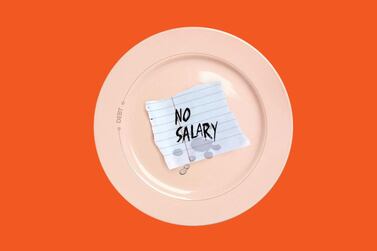Concerns about the financial repercussions of the coronavirus crisis have largely faded since the first few hectic weeks. That’s a problem, because authorities should be doing much more to prepare for what could be a destabilising wave of losses.
In the face of the pandemic, the US Federal Reserve has done an excellent job of keeping financial markets functioning. It has pledged trillions of dollars to ensure that a broad range of institutions – including hedge funds, money-market mutual funds and securities dealers – can meet their immediate obligations. This has helped consumers and companies to borrow the money they need to stay afloat.
At some point, though, the question will be not whether borrowers can keep borrowing, but whether they can afford the obligations they’ve taken on. Many in the US, for example, entered the crisis more indebted than ever.
As of March 31, non-financial corporate debt in the US stood at $10.5 trillion (Dh38.56tn), or 48.7 per cent of gross domestic product – the highest level on records going back to 1950. An unusually large share of that consists of bonds issued by companies with the lowest investment-grade ratings, or of so-called leveraged loans, to even riskier enterprises. Household debt stands at more than 75 per cent of GDP.
Much will depend on how soon the economy can return to normal. But as movement restrictions cause borrowers to fall behind on payments, potential losses are mounting. More than $1 trillion in mortgage debt – including an estimated $361bn on the balance sheets of private lenders – is in forbearance programmes. The share of car loans and credit cards in hardship stood at an estimated 7 per cent and 3.7 per cent in May, up about 18 and 180 times, respectively, from a year earlier. Defaults on the estimated $1.2tn in leveraged loans are up more than threefold.
When the reckoning comes, the crucial question will be where the losses are concentrated. The government will absorb some, given that it guarantees most mortgage loans and has put up $454bn to backstop the Fed’s emergency lending programmes. Beyond that, if losses accrue primarily to investors who can afford to take the hit, then the effect on the broader economy might be limited. If they end up on the balance sheets of systemically important financial institutions that lack the equity capital to absorb them, they could trigger distress that would worsen an already deep recession.
In the 2010 Dodd-Frank Act, Congress mandated regular stress tests to assess the largest banks’ exposures, tasked the Fed with ensuring that they built up enough capital to weather severe downturns, and adopted the Volcker Rule to curb speculative risk-taking. It also created the Financial Stability Oversight Council and the Office of Financial Research to monitor vulnerabilities outside the banking system and prod the relevant regulators to address any shortcomings.
Unfortunately, these regulators never made full use of their powers, and have more recently given up ground. The Trump administration slashed funding for the OFR and the FSOC, and scrapped efforts to subject systemically important non-bank institutions to added scrutiny. The Fed allowed – and is still allowing – the largest banks to deplete their capital by paying out money to shareholders. Stress tests merit little confidence. The latest round offered only a broad sense of banks’ vulnerability to the current crisis, with no information on individual institutions. Also, just this week, regulators completed a gutting of the Volcker Rule and further eased requirements aimed at maintaining banks’ resilience.
Preparing for the next crisis will require fixing some fundamental weaknesses. For one thing, the US should stop subsidising debt. Time and again, crises have demonstrated that excessive leverage makes economic shocks more damaging. Yet the government still encourages it – for example, by providing tax breaks for interest on mortgage loans and corporate borrowing, and by providing an almost unlimited backstop for the short-term debts of financial institutions. Eliminating or constraining such preferences would make the whole economy more resilient.
Officials must also address some more immediate vulnerabilities. The Fed should encourage banks to pause dividends and accumulate equity, and prepare for an emergency round of rigorous stress tests. The Treasury should reactivate the OFR and the FSOC to help ensure losses on leveraged loans don’t trigger more widespread contagion, insurers and large hedge funds don’t become weak links and mortgage markets keep functioning.
The 2008 financial crisis was particularly damaging in the way it undermined people’s faith in a political establishment that proved woefully unprepared. By taking responsible steps now, policymakers can ensure the coronavirus pandemic doesn’t bring about a repeat.
* Bloomberg







